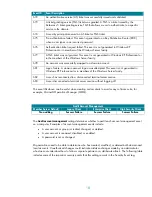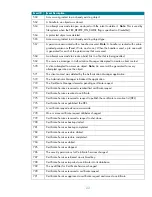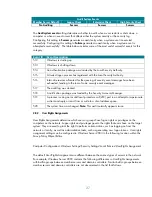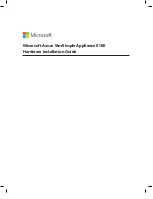
17
2.8
Baseline Level
The settings at the Member Server OU level define the common settings for all member servers in the
domain. This is done by creating a GPO that is linked to the Member Server OU, known as a
baseline policy. The GPO automates the process of configuring specific security settings on each
server. Administrators should use the member server baseline policy (MSBP) security template
supplied within the Microsoft “Windows Server 2003 Security Guide” that is most appropriate to their
corresponding network environment. The following table displays the security template used within
each appropriate network environment.
Baseline Security Template
Member Server
Default
Legacy Client
Enterprise Client
High Security Client
None Legacy
client-
member server
baseline.inf
Enterprise client-
member server
baseline.inf
High Security-
Member server
baseline.inf
The following settings are described as they appear in the user interface (UI) of the Security
Configuration Editor (SCE) snap-in.
2.8.1
Audit Policy
Administrators should set up an audit policy. An audit policy determines the security events to report
to the network administrators so that user or system activity in specified event categories is recorded.
The administrator can monitor security-related activity, such as who accesses an object, if a user logs
on to or off from a computer, or if changes are made to an auditing policy setting. Before
implementing audit policies, one must decide which event categories need to be audited for the
corporate environment. The auditing settings that an administrator chooses for the event categories
define the corporate auditing policy. By defining audit settings for specific event categories,
administrators can create an audit policy that suits the security needs of the organization. Audit
policy values can be configured in the Domain Group Policy section of Windows Server 2003 at the
following location:
Computer Configuration\Windows Settings\Security Settings\Local Policies\Audit Policy
Audit Account Logon Events
Member Server Default
Legacy Client
Enterprise Client
High Security Client
Success
Success Failure
Success Failure
Success Failure
The
Audit account logon events
setting determines whether to audit each instance of a user logging
on to or off another computer that validates the account. Authenticating a domain user account on a
domain controller generates an account logon event. The event is logged in the domain controller’s
security log. Authenticating a local user on a local computer generates a logon event. The event is
logged in the local security log. There are no Account logoff events logged. The following table
includes some of the important security events that this setting logs in the Security Event Log.
















































